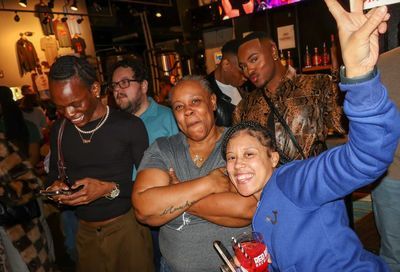Perfecting Your Plan
Before you step into the gym, hammer out a plan â€" but don't be afraid to change it down the line
The No. 1 mistake people make when walking into the gym is not having a plan. The weights area can be intimidating for anyone not accustomed to the hyper-masculine, testosterone-fueled environment. The anxiety is compounded by the realization that you have no idea what to actually do.
With all the information available on the subject, it can be easy to get bogged down by the minutiae that do nothing but confuse you even further. Luckily, there are a few common themes among all lifting programs. These themes can be applied to your own situation to develop a program that meets your goals.

The ”Big 3” lifts are the basis of nearly every program under the sun, so starting there is a good option. This three-legged foundation is the bench press, squat and dead lift. Several minor exercises, including the overhead press, barbell row and chin-ups, round out a full-body experience. Those movements alone make a very solid program, building in appropriate spacing to make sure you’re able to fully recover between workouts.
Bodybuilding-centric workouts typically involve a large number of repetitions and low-weight totals. They are often referred to as ”splits.” This title is derived from the program splitting your body into sections and training only one or two sections at a time. This is because a body would have a hard time handling such large volume on so much of your body at once. The most basic split you’ll encounter is ”push/pull/legs.” As the name implies, one day you will be pushing: bench press, overhead press, shoulder press. On the second day, it’s time to pull: chin-ups, barbell rows, dead lifts. Finally, it’s legs: squats, leg press, leg curls and lunges are the usual movements.
These programs are designed to give you a larger appearance. Power lifting or strength workouts, however, are the opposite.
With power lifting/strength workouts, very heavy weight is used, with only a few repetitions per set. These sets heavily tax your central nervous system, attempting to recruit as much muscle as possible. Understandably, power lifting/strength workouts can be extremely tiring, very quickly. Only a few movements are performed during a typical power-lifting routine. They are, however, done multiple times a week, as opposed to the bodybuilding-style workouts.
A typical breakdown of this program would be bench-pressing on Day 1, three or four sets, of three to five repetitions each. That day is followed by Day 2 of squatting, with a similar rep scheme, and rounding out Day 3 with dead lifts on an identical repetition count.
Gaps in physique are fixed with ”accessory work.” Accessory work is used to improve any weak areas in your body, to help you move more weight. These workouts can include some of the same smaller movements involved in bodybuilding: shoulder presses, chin-ups and leg curls. They are merely complementary workouts, however, and should be kept to a minimum.
When deciding how to program your movements, a certain degree of trial and error is involved. Everyone’s body responds differently to stimuli. There are those who see better results with heavy-weight and low-repetition schemes, while others respond quickly to high-repetition counts with less weight.
Indentifying how your body feels is as important as structuring the plan. It’s always best to give yourself time to adjust to the workouts, the rule of thumb being eight to 12 weeks. If after that period you’re not getting the response you want, don’t be afraid to retool your program to better meet your needs.
Get more health and fitness tips and news online at MetroWeekly.com/health.
Support Metro Weekly’s Journalism
These are challenging times for news organizations. And yet it’s crucial we stay active and provide vital resources and information to both our local readers and the world. So won’t you please take a moment and consider supporting Metro Weekly with a membership? For as little as $5 a month, you can help ensure Metro Weekly magazine and MetroWeekly.com remain free, viable resources as we provide the best, most diverse, culturally-resonant LGBTQ coverage in both the D.C. region and around the world. Memberships come with exclusive perks and discounts, your own personal digital delivery of each week’s magazine (and an archive), access to our Member's Lounge when it launches this fall, and exclusive members-only items like Metro Weekly Membership Mugs and Tote Bags! Check out all our membership levels here and please join us today!



















